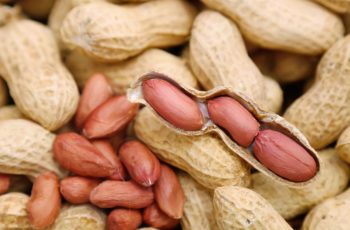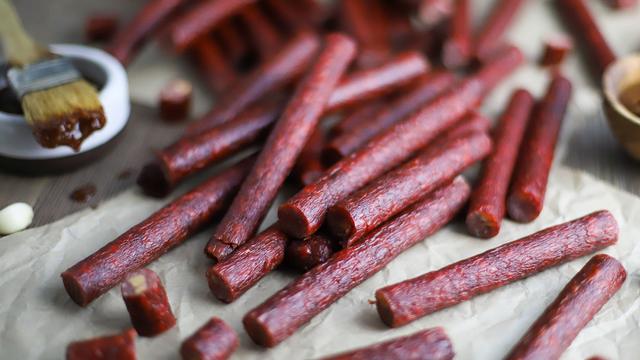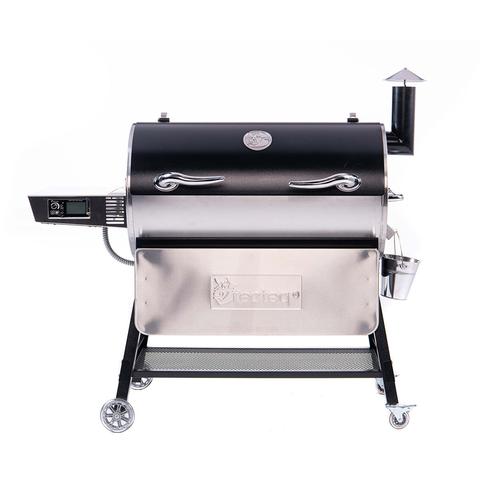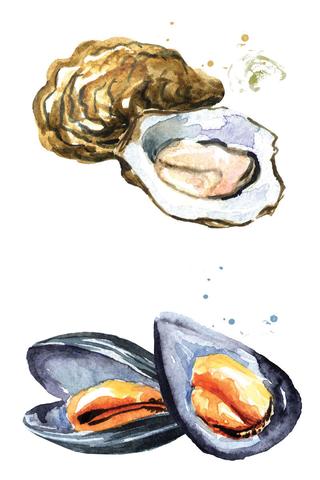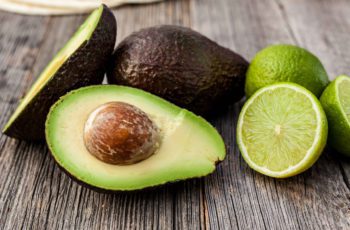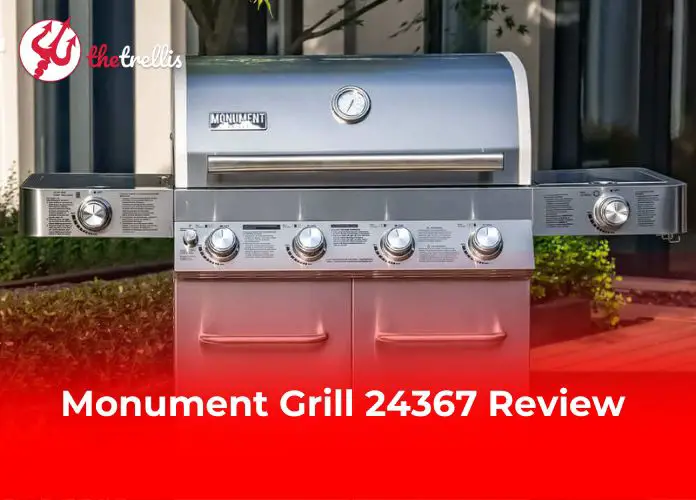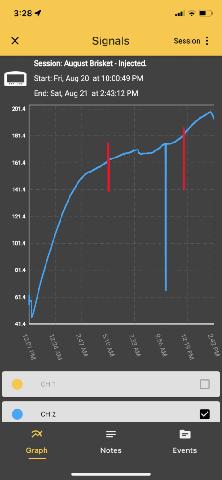
“Discover the Perfect Brisket Every Time with Brisket Stall Temp: Unleash the Secrets to Mastering Tender and Juicy Briskets with Expert Tips, Tricks, and Temperature Guidelines. Elevate your BBQ game and delight your guests with mouthwatering, melt-in-your-mouth brisket like never before. Don’t let the stall intimidate you anymore – conquer it with confidence and become a true brisket aficionado!”
Brisket Stall: Internal Temps, Wrap Material, and More

Smoking brisket is all about breaking down the meat’s collagens and connective tissues. To achieve this, the internal temperature of the brisket needs to reach a point where the collagens melt and the fibers separate. However, brisket often reaches a temperature plateau or “stall” around 155 – 165F internally. This stall occurs due to evaporative cooling, where moisture on the surface of the meat evaporates and cools it down.
During the stall, the evaporation rate increases as the temperature rises until it balances out with the heat input. The meat then plateaus until all the surface moisture is gone. It’s important to note that most bark formation occurs after the stall, so wrapping at this stage can hinder its development. Wrapping in aluminum foil is a common method known as the “Texas Crutch,” which prevents evaporative cooling but can lead to soft and mushy bark due to trapped moisture.
Alternatively, butcher paper can be used for wrapping as well. Unlike aluminum foil, butcher paper is porous and absorbs fat and water without degrading the bark as much. Some barbecue enthusiasts opt not to wrap at all, allowing the stall to pass naturally. Ultimately, there are various methods for beating the brisket stall, including wrapping with foil or butcher paper or simply waiting it out.
What is a Brisket Stall?
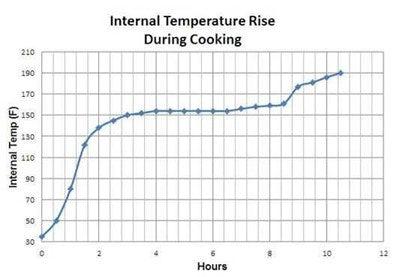
A brisket stall refers to a point during the smoking process of a brisket where the internal temperature plateaus or stalls. This typically occurs when the internal temperature reaches around 155-165F. The stall is caused by evaporative cooling, where moisture on the surface of the meat evaporates and cools it down. As the temperature continues to rise, the evaporation rate increases until it balances out with the heat input.
The brisket stall is an important part of smoking brisket as it allows for collagen breakdown and connective tissue separation, resulting in tender and flavorful meat. However, many people choose to wait to wrap their brisket during this stall period in order to maximize bark formation. Wrapping can be done using aluminum foil, butcher paper, or a combination of both, with each method offering different effects on the final texture and flavor of the meat.
What Temperature Does Brisket Stall?
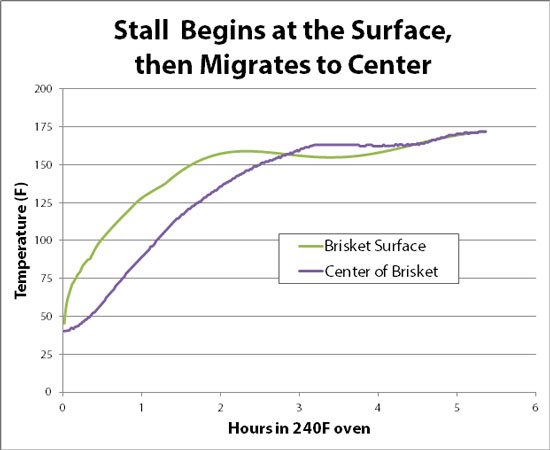
The stall or plateau for brisket usually occurs at around 155 – 165F internal temperature. This is the point where the collagens in the meat start to melt and the fibers separate. However, it’s important to note that the specific temperature at which the stall happens can vary depending on factors such as the size of the brisket, type of smoker used, moisture content, and accuracy of your thermometer.
To beat the brisket stall, there are a few methods you can try. One common technique is to wrap the meat tightly in aluminum foil, also known as the “Texas Crutch.” Wrapping helps to prevent evaporative cooling and speeds up the cooking process. Some people also choose to increase the smoker temperature from 225F to 250-275F or even higher, which reduces the chances of a stall occurring. Electric smokers and pellet cookers are less likely to experience a stall due to their unique features.
When it comes to wrapping, there are different opinions and methods. Some prefer using aluminum foil alone, while others opt for butcher paper or a combination of both. Aluminum foil creates an impermeable barrier that traps moisture and can result in softer bark. Butcher paper serves a similar purpose but is porous and absorbs fat and water without degrading the bark as much.
How to Beat a Brisket Stall
The brisket stall is a common occurrence when smoking brisket, but there are several methods you can use to overcome it. One method is to wrap the brisket in aluminum foil, also known as the Texas Crutch. This tightly wrapped foil creates an impermeable barrier that prevents evaporative cooling and speeds up the cooking process. Some people choose to add liquids like beef stock to enhance flavors, but this is not necessary.
Another way to beat the stall is by increasing the smoker temperature. By raising the temperature from 225F to 250-275F or even 300F, you reduce the chances of a stall occurring. This method can be especially effective with pellet cookers and electric smokers, which create a humid environment or convection of heat that speeds up evaporation.
Alternatively, you can choose not to wrap the brisket at all and wait for the stall to pass naturally. This method requires patience, as it can take anywhere from 1-7+ hours for the stall to end. However, some pitmasters prefer this method because they find that it results in better fat render and a softer bark over time.
Wrapping with Aluminum Foil, Butcher Paper, or Unwrapped
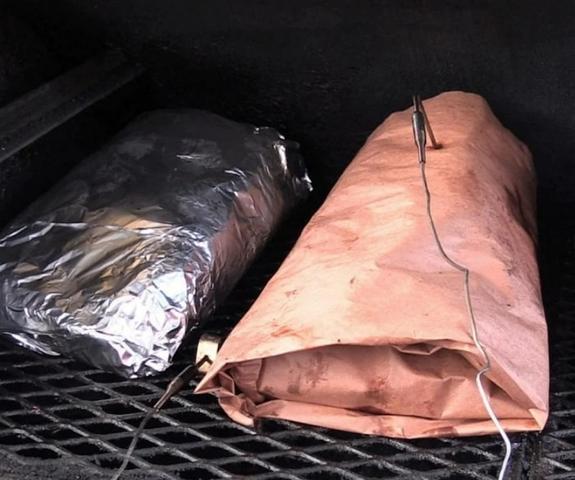
When it comes to wrapping brisket during the smoking process, there are different options available. One popular method is using aluminum foil as a tight wrap around the meat. This creates an impermeable barrier that prevents evaporative cooling and essentially braises the meat. However, one downside to using foil is that it can produce a soft and mushy bark due to trapped moisture.
Another option is using butcher paper to wrap the brisket. Butcher paper functions similarly to foil in preventing evaporative cooling but is porous, allowing fat and water to be absorbed. This results in less steam and helps maintain the quality of the bark. Some barbecue enthusiasts have even experimented with combining both butcher paper and foil by creating a “foil boat” to protect the edges of the brisket while allowing the top to maintain its bark.
However, there are also those who prefer not to wrap their brisket at all. By waiting out the stall and not using any wrapping material, they believe that the fat render is better and may choose to wrap with foil after cooking or hold the brisket overnight to soften the bark over time.
Aluminum Foil
Aluminum foil is commonly used to wrap brisket during the smoking process to create a “Texas Crutch.” Wrapping the meat tightly in foil creates an impermeable barrier that prevents evaporative cooling from occurring. This wrapping method essentially braises the meat, trapping moisture and enhancing thermal conductivity for faster cooking.
However, one drawback of using aluminum foil is that it can result in a soft and mushy bark due to the trapped moisture. Some pitmasters, like those from Goldee’s Barbecue, actually wrap the brisket with foil after it has finished cooking to reduce the crunchiness of the bark. The foil collects meat juices and fat, confiting the meat and adding flavor.
In conclusion, aluminum foil is a popular choice for wrapping brisket during smoking as it helps beat the stall and speeds up cooking time. However, pitmasters should be aware of the potential impact on bark texture and adjust their wrapping technique accordingly.
Butcher Paper or Peach Paper
Butcher paper, also known as peach paper, is a popular choice for wrapping brisket during the smoking process. It functions similarly to aluminum foil by preventing evaporative cooling and helping to maintain moisture in the meat. However, unlike foil, butcher paper is porous and allows for some airflow, which can result in a better bark formation on the brisket. The paper readily absorbs fat and water, reducing the risk of producing a soft and mushy bark that can sometimes occur with foil-wrapped briskets.
Many pitmasters prefer using butcher paper because it provides a good balance between moisture retention and bark development. The paper absorbs excess moisture without completely sealing off the meat like aluminum foil does. This allows for some evaporation, which helps to concentrate flavors and create a more pronounced bark on the outside of the brisket.
Overall, using butcher paper or peach paper to wrap your brisket can help you achieve a tender and flavorful end result while still maintaining a desirable bark. It is important to tightly wrap the meat with the paper to prevent moisture loss and ensure even cooking throughout the stall period.
Aluminum Foil Boat
The concept of creating a foil boat for brisket was introduced by Bradley Robinson, who learned it from the crew at Freedmen’s Bar. In this method, aluminum foil is used to protect the edges of the brisket from drying out while allowing the top of the brisket to maintain its bark and continue rendering fat. By wrapping in foil at around 175F, there is minimal collection of rendered tallow. The foil boat technique is based on color and feel, with enough rendered tallow to confit the meat side of the brisket.
While some have suggested wrapping brisket first in butcher paper and then using a foil boat, it is not clear what additional benefit the paper provides at that point. Butcher paper already absorbs juices well and protects edges effectively. Alternatively, there are those who prefer not to wrap their briskets at all. This involves waiting for the stall to pass, which can take several hours. Goldee’s Barbecue chooses not to wrap their briskets because they find that it results in better fat render. They then wrap with foil and hold the brisket overnight to soften the bark.
Unwrapped
Some barbecue enthusiasts prefer not to wrap their brisket at all. They believe that waiting out the stall and allowing the meat to cook without any covering produces better results. By not wrapping, they find that the fat render is improved, leading to a more flavorful and tender brisket. These individuals may choose to wrap the brisket in foil after it has finished cooking, and then hold it overnight to further soften the bark over time.
Not wrapping the brisket requires patience, as the stall can last anywhere from 1-7+ hours. However, for those who appreciate the traditional low and slow cooking method and enjoy the process of tending to their smoker, waiting out the stall can be a rewarding experience.
Probing Brisket While it’s Stalling
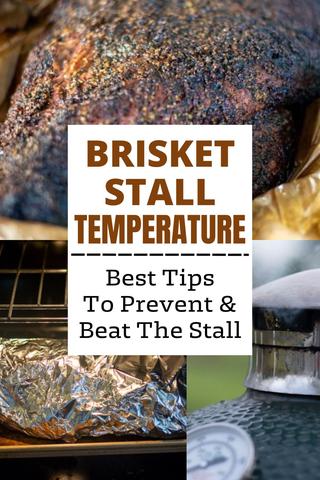
When the brisket is in the midst of its stall, it can be frustrating to determine when it is truly done. One effective method is to use a temperature probe to monitor the internal temperature of the meat. It is important to consistently probe the same spot each time to get accurate readings. Typically, the point muscle of the brisket will finish faster than the flat due to its higher fat content. Therefore, it is recommended to probe in the middle of the brisket for more reliable results.
By waiting until the internal temperature reaches around 175-180F before wrapping, you can ensure that you develop a better bark on your brisket. This technique allows for a longer exposure to smoke and heat, resulting in a more flavorful and textured outer layer. Although stalling can be frustrating, proper probing techniques can help you navigate through this stage of smoking your brisket with confidence.
Overall, whether you choose to wrap your brisket or wait out the stall without wrapping, monitoring and probing are essential steps in achieving a perfectly cooked brisket. The choice of wrapping material, such as aluminum foil or butcher paper, depends on personal preference and desired outcomes for bark formation and moisture retention. By understanding the science behind stalling and utilizing proper probing methods, you can successfully overcome this hurdle and create a delicious smoked brisket.
Final Thoughts
The process of smoking a brisket can be challenging, especially when it reaches the stall or plateau. Understanding the science behind the stall and how to overcome it is crucial for achieving a tender and flavorful brisket. Wrapping the brisket, either with aluminum foil or butcher paper, is a popular method to beat the stall. Both materials serve as a barrier to prevent evaporative cooling and promote faster cooking time.
However, there are different opinions on wrapping. Some prefer aluminum foil for its impermeable properties, which result in softer bark but retain more moisture. Others opt for butcher paper, which absorbs fat and water while preserving the bark’s texture to a greater extent. There are even those who choose not to wrap at all, allowing the stall to pass naturally over several hours. Each method has its advantages and can produce delicious results.
Ultimately, finding what works best for your personal preference and desired outcome is key. Whether you choose to wrap with aluminum foil, butcher paper, use a foil boat technique, or wait out the stall without wrapping, monitoring the internal temperature and ensuring consistent probing in the middle of the brisket are essential steps towards achieving a successful smoked brisket.
In conclusion, monitoring the brisket stall temperature is crucial for achieving a tender and flavorful end result. Understanding this phenomenon and adjusting cooking techniques accordingly can help ensure the success of your brisket cook. Remember to be patient during the stall and continue cooking until the desired internal temperature is reached for the best BBQ experience.
Learn More About Grilling
If you want to learn more about grilling, check out these other helpful resources!

